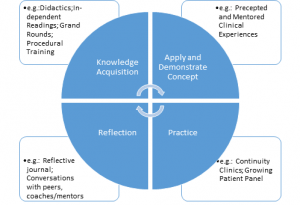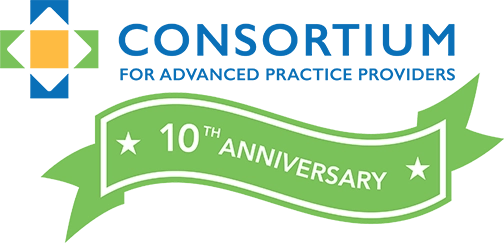This will wrap up our discussion of the concept of curriculum. Future blogs will address objectives within the curriculum and how to crosswalk these concepts with the unique identity of your training program. Then we will move on to the subsequent Standards.
Let’s briefly review what we’ve covered so far:
- The curriculum is the map or guide for all activities that ‘touch’ the trainee.
- The curriculum presents the ‘big ideas’ and main concepts to all those involved with delivering the experiential learning to the trainee.
- The curriculum specifies the domains of learning, the competencies and the objectives.
- The curriculum includes the how, what, where and when of the training program.
- The curriculum integrates evaluation and assessment into the delivery of training, and uses the feedback from the formative and summative assessment/evaluation to make adjustments to the program.
Now let’s turn our attention to how to design curricula.
Wiggins and McTighe developed an iconic curriculum design approach called UbD : understanding by design. While their approach is intended for classroom teaching, it readily translates to designing experiential learning curricula for adults. Basically, curriculum is designed “backwards”; it is delivered “forward”.
What does it mean, that curricula are designed “backwards”? Curriculum design begins with the identification of the desired outcomes rather than the expected learning activities. These outcomes are equivalent to the competencies and objectives that drive the Consortium’s Standards. In essence, this is a standards-based curriculum design process that begins by identifying where you want to end up. One then works ‘backwards’ from the desired outcome to identifying the ‘evidence’ of success. The last step is to design/identify the learning experiences that promote success.
Quoting loosely from the UbD website above: the backward design process involves three interrelated stages:
- Stage One: Identifying desired results (such as enduring understandings, essential questions, and enabling knowledge objectives).
- Stage Two: Determining acceptable evidence to assess and to evaluate learner achievement of desired results. [Evidence refers to formative and summative learner assessment and program evaluation.]
- Stage Three: Designing learning activities to promote the learners’ mastery of desired results and their subsequent success on identified assessment tasks.
Once the outcomes have been identified, then experiential learning can be designed in the following way. Below is a 2-D schematic from adult learning theory that I have adapted our purposes. Using the schematic, beginning in the upper left corner, identify the knowledge, attitude and/or skills (KASs) that are required to perform the outcome at the desired level of proficiency. Then, identify or create the experience where the KASs or concept(s) would be applied and demonstrated. This is followed by opportunities for practice and capped off by time for reflection. This becomes an iterative process. The curriculum becomes sequentially more challenging as the sequences are repeated with gradually increasing levels of intensity, complexity and/or frequency.

The outcome drives the design. Design backwards; deliver forwards. Once the learning sequence is completed, the trainee should be able to demonstrate the desired action. Optimally the learning process becomes a spiral of increasing knowledge, demonstration, practice, reflection and mastery that transitions into life-long learning. For excellent overviews on adult learning theory check out Teaching Excellence in Adult Literacy and the website http://www.adultlearningprinciples.com/.
In summary, curriculum design for NP postgraduate training should be anchored in defined outcomes which are specific, measurable, action-oriented, relevant and time-bound (ie: SMART objectives). The curriculum is the map for creating a program where the trainees achieve the desired outcomes through a cumulative process of experiential learning activities of graduated complexity. Further, the learning experiences are deliberately structured and sequenced for increasing, frequency, intensity and/or duration. Of course, the active participation of peers, preceptors, mentors and coaches is essential. Optimally, the curriculum also creates space to accommodate serendipitous learning opportunities that might occur naturally in the clinical setting.
Creating a compelling learning environment that is anchored in a meaningful curriculum is not easy – but the rewards are well worth the effort. We are literally creating fertile ground to foster the growth and development of future generations of leaders in healthcare.
As we approach the 4th of July weekend, it is only fitting to leave you with the wisdom of Benjamin Franklin: “Tell me and I forget, teach me and I may remember, involve me and I learn.”
Until next time,
Candice


